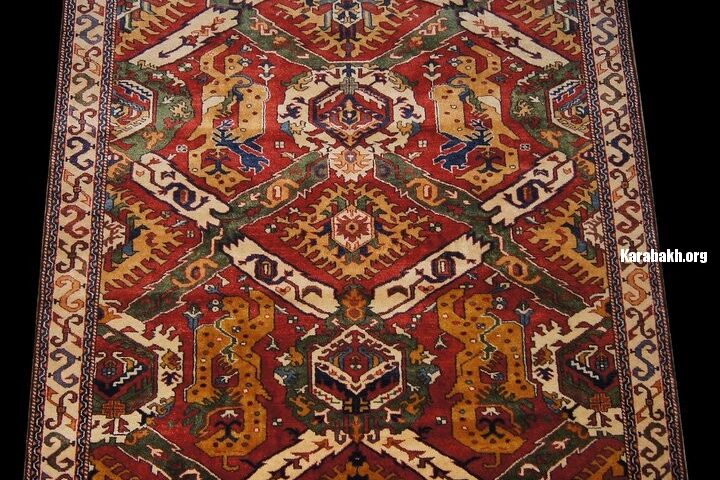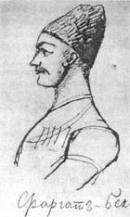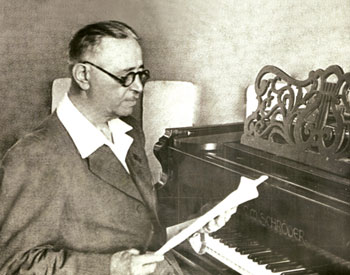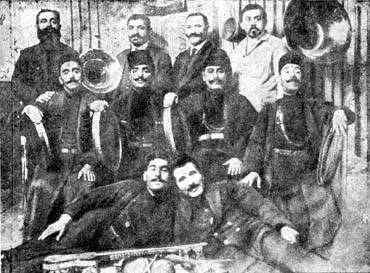Molla Panah Vagif (1717-1797)
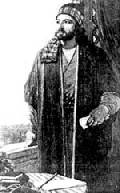
Vagif occupies a prominent place in the history of Azerbaijan due to his literary and political activities. He was a great poet, the founder of new realism genre in the Azerbaijanian poetry and also a prominent statesman and diplomat, eshikagasi – the minister of foreign affairs in the Karabakh khanate.
Vagif was born in Kazakh district of Azerbaijan but spent most part of his life in Karabakh and his name and activities always were associated with Karabakh as well. Due to his knowledge and talents Vagif became popular and beloved among the Karabakh people. There was even a saying: «Not every literate person can be Vagif».
Vagif began a new era in the Azeri poetry. In his poems he praised and gave priority to the mundane feelings and desires, rather than the abstract divine ones. This was the main thing that distinguished Vagif from his predecessors and made him the founder of the realism genre in the Azeri poetry. The language of the Vagif poems was qualitatively innovative as well: vivid, simple and clear to the wide public. That’s why Vagif’s poems – koshma have made a great influence to the Azeri folklore and many of them repeatedly used in the folk music of ashuks.
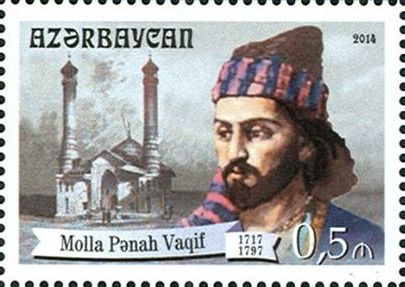
When being the eshikagasi, Vagif did a lot for the prosperity and political growth of the Karabakh khanate. Also, he had outstanding deserts in organizing the heroic defense of Shusha during the invasion of shah Qajar of Persia in 1795 and 1797.
Vagif died during the disorders, which followed Qajar’s invasion of Shusha in 1797.
Kasim bey Zakir (1784-1857)
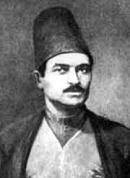
One of the most prominent Azeri poets of the XIX c., Zakir was born in 1784 in Shusha – the historical capital of Karabakh. He was one of the founders of the critical realism and satirical trend in the Azeri literature. Zakir’s satire exposed the ugliness of the Czarist rule, its local corrupt advocates, social injustice and the backwardness of the clergy. Because of his satire, Zakir was even exiled from Shusha and had to live for several months in exile before he could return back home.
Zakir was also a great lyrical poet, who write many poems considered to be the masterpieces of the Azeri literature. While in exile he write one of his best lyrical poems «Durnalar» (Cranes). This poem was dedicated to his longing for his homeland in Karabakh.
Khurshid Banu Natevan (1830-1897)
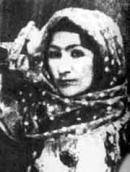
Daughter of the last Karabakh khan – Mehdi Kulu-khan (khan – a feudal title of the Azeri rulers in XVIII c.), Natevan was one of the best lyrical poet-women of Azerbaijan, advanced and bright person of her time. Humanism, kindness, friendship and love were the main themes of her poems-kazels.
Natevan was also a talented artist and virtuous philanthropist. Aiming at developing the poetry, she established and sponsored several literary societies in Shusha. One of them called «Majlisi Uns» became especially popular and concentrated major poetic-intellectual forces of Karabakh of that time.
Natevan was also the first person to build a water-pipe to Shusha, thus relieving Shusha people from many troubles.
Natevan did a lot for the prosperity of her native town and country. Her bright memory will always be preserved in the hearts of her grateful people.
Mir Movsum Navvab (1833-1918)
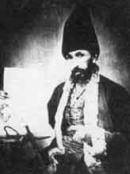
Navvab was a famous and respected citizen of Shusha and the whole Karabakh, a progressive, gifted and versatile person of her time. He was both a poet, artist («Flowers», «Birds», «Portrait of Tamerlan» etc.), music historian, astronomer, carpenter, chemist and mathematician. He did a lot for the growth of literacy and culture in Karabakh. Navvab had a hand-made printing-press, which he used for printing the poems of the Karabakh poets and disseminated them among the people. Navvab is also the author of the book «Tezkireyi-Navvab», which gives information about one hundred poets and writers of Karabakh.
Navvab also gave us valuable information about the history of Armenian-Azeri conflicts in his book «The history of Armenian-Moslem fight (the name «Moslem» was widely used as a substitute for the «Azeri» during the XIX c. and early XX c.) In this book he describes the Armenian-Azeri clashes during the years 1905-1906.
Navvab died in 1918 in Shusha not long before a new ethnic clash between Armenians and Azeris begin.
Najaf bey Vezirov (1854-1926)
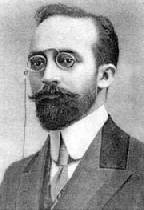
Najaf bey Vezirov of Shusha has played an outstanding role in establishment and improvement of the national theatre and in development of the Azeri dramatic art. His name entered the history of Azerbaijan as the founder of realistic tragedy genre, the first Azeri actor, the first feuilletonist and a talented writer. In his works Vezirov comes forward as a great enlightener exposing and criticizing the remnants of feudal-patriarchal system in the society.
One of the best works by Vezirov was «Musibeti-Fahreddin» (Fahreddin’s grief) written in 1896, which marked the birth of the tragedy genre in the Azeri literature. Having created such plays as «The Stone Thrown From Behind Hits the Heel», «From Rain To Downpour», «Pehlevani-Zemane» (Hero of the time), «Late Repentance Is No Use» etc. Vezirov also recommended himself as a prominent playwright. These plays made Vezirov an immortal classic of the Azerbaijan literature.
Abdulrehim bey Hakverdiyev (1870-1933)
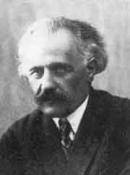
Hakverdiyev has outstanding deserts in developing the Azeri culture and arts. He was born in Shusha in a respectable aristocratic family. His interest to dramatic art was revealed very early. When studying in the school in Shusha he participated in the amateur theatre performances and even wrote a comedy «Haji Dashdemir». In 1890s Hakverdiyev staged the first opera in Shusha and in the whole Karabakh province. Before this, opera was staged only in Baku. Having gathered the famous singers and musicians of Karabakh, he also organized the first oriental musical concerts in the history of the Azeri music.
Hakverdiyev, who continued the traditions of the great playwrights M.F. Akhundov and N. bey Vezirov, entered the history of the azeri literature as a talented playwright, prosaic, excellent producer and scientist. Among the classical plays by Hakverdiyev we can mention «The Ruined Nest», «Unfortunate Youth», «Peri-jadu» and others, where the author exposes the negative sides of the life in the XIX c. Azerbaijan.
In 40 years of his literary activity Hakverdiyev wrote many plays, stories, a number of scientific articles and occupied a deserved prominent place in the Azeri literature as a great realist writer.
Firidun bey Kocharly (1863-1920)
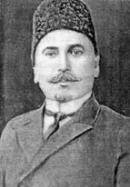
Kocharly was one of the greatest literary critics and literature historians of Azerbaijan. He was born in 1863 in Shusha -the administrative capital of Karabakh at that time. He was a great critic, writer, translator, teacher and public figure. Kocharly was one of the first members of the national intelligentsia to begin struggle for the clarity of the Azeri literary language. Having collected valuable materials, he wrote a capital three-volume work «The Literature of the Azeri Turks». This work gave information about 130 Azeri writers and was an invaluable work of its kind about the Azerbaijanian literature at that time.
In spring 1920, during the Soviet invasion, Armenian dashnaks (dashnaks -members of the chauvinist Armenian party «Dashnaksutiun») pretending to be Bolsheviks, arrested not guilty Kocharly and took him to Ganje. After two days when special envoys were sent from Baku to Ganje to release Kocharly, it was late. Dashnaks killed Firidun bey without any court and trial.
Yousif Vazir Chemenzeminli (1887-1943)
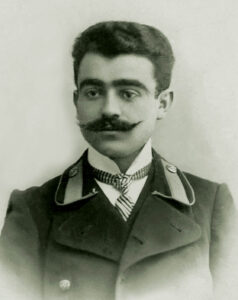
Chemenzeminli is one of the talented writers occupying a prominent place in the Azerbaijanian literature. He was born in Shusha and spent his childhood and youth in this town. «Imagine a town in the mountains, shrouded in green in spring and summer; and in mist and snow in autumn and winter. This is my town.» – Chemenzeminli, who always remembered Shusha with love and pride, write in his memoirs.
Shusha and Karabakh themes occupy the central place in Chemenzeminli’s works. One can find a detailed description of late XIX c. and early XX c. Karabakh in his novels «Twenty Years of My Life», «Copybook of a Youth» etc. These novels can be of great interest for the researchers learning the history of Karabakh.
Chemenzeminli’s masterpiece novel «In the Blood» is also dedicated to Karabakh and describes the history of the Karabakh khanate of Ibrahim-khan, as well as the heroic defense of Shusha from the invasion of Shah Qajar of Persia in 1795.
Chemenzeminli was also a prominent political figure, first ambassador of the Azerbaijan Democratic Republic (1918-1920) in Turkey. After the Soviet invasion he had to live for several years abroad. His yearning for the Motherland made him to return after a while but the Soviet government always persecuted him for his past. In 1940 he was arrested and exiled to the village of Sukhobezvodnoye in Gorki (N.Novgorod) region of Russia. Chemenzeminli couldn’t resist the deprivations of the life in exile and died in 1947 after a long period of illness.
Ahmed bey Agaoglu/Agayev (1869-1939)
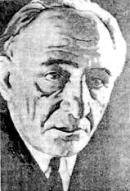
Born in Shusha Agaoglu was one of the most prominent ideologists of the Azerbaijan national liberation movement in the beginning of the XX c. He was a well-educated person of his time, who had graduated from the Universities in St.-Petersburg and the Sorbonne University in Paris. He was also a famous journalist, who spoke fluently in five languages and therefore, wrote articles on current affairs for many popular newspapers in the country and abroad.
Ahmed bey Agaoglu proved himself as a great enlightener. He considered the cultural and educational progress to be the major provision for the national liberation. No wonder that Ahmed bey was concerned about the situation of women in the early XX c. Azerbaijan too. He was the first member of the national intelligentsia to raise his voice for the equal rights for women. In his book «Woman in the Islamic World» published in 1901, he proved that «without women liberated, there can be no national progress».
Agaoglu also showed himself as a prominent political and public figure. He played an important role in prevention of ethnic clashes between Armenians and Azeris in 1905. In order to prevent the terrorist actions of the Armenian dashnaks, Agaoglu established the «Difahi» (Defender) organization and consolidated many members of the national intelligentsia for this purpose. He exposed Armenian dashnaks in both his publications and courageous speeches. «Armenian dashnaks, be sure, that we will not allow you to build your happiness on the ruins of our people» – Agaoglu said. The «Difahi» organization did a lot to prevent the Armenian dashnak actions against peaceful Azeri population of Karabakh and of other places of Azerbaijan.
During the years of the Azerbaijan Democratic Republic (1918-1920) Agaoglu was elected to the Parliament (Milli Mejlis), later became the deputy of the speaker.
Unfortunately, after the Soviet invasion Ahmed bey Agaoglu had to live the country. He moved to Ankara, Turkey and continued his journalism and political activities there, working as the director of the press bureau, the editor-in-chief of the official newspaper «Hakimiyyeti-Milliyye», and as a close advisor of Ataturk,- the founder of the modern Turkish Republic.
Source: F. Shushinsky, «Shusha» Baku 1998



